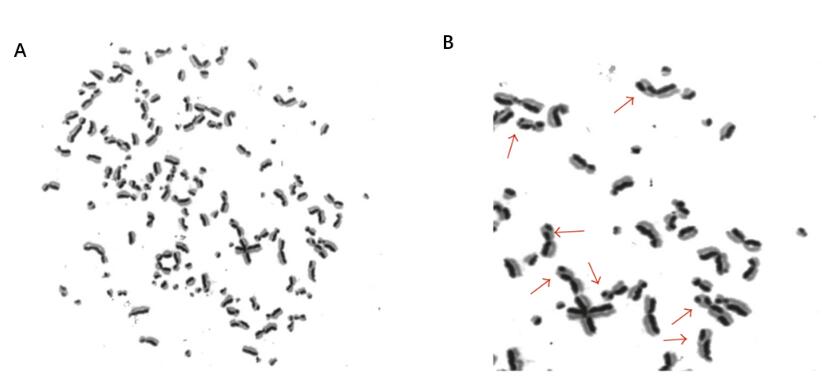SCE (Sister Chromatid Exchange) Analysis
Sister chromatid exchange (SCE) is the exchange event of genetic material between two identical sister chromatids. Sister chromatid exchange analysis is a classic toxicology assay for genotoxicity and for detecting alterations to the biochemistry underlying cellular homologous recombination. And the elevation of SCE frequency is considered as a result of replication stress from genetic defects, ROS stress, and genomic damages. In recent years, SCE analysis has come into use a sensitive development of BrdU-dye techniques for SCE detection, which are simpler to use than autoradiography, the method initially employed. Creative Bioarray offers the SCE (Sister Chromatid Exchange) Analysis service around the world to help you detect the genomic instability on chromosomes.
Sister Chromatid Exchange (SCE) analysis has several applications in the field of biology and medical science. Some of them include:
- Genetic Toxicology: SCE analysis is routinely used in genetic toxicology to evaluate the genotoxic potential of various chemicals and drugs. It assists in the prediction and assessment of their carcinogenic potential.
- Diagnosis: It can be used as a diagnostic tool for the assessment of certain genetic disorders like Bloom's syndrome, where the rate of SCE is significantly higher than normal.
- Biomonitoring: In occupational and environmental health, SCE analysis can be used for the biological monitoring of exposure to genotoxic agents.
- Cellular Aging Research: SCE testing can also be applied to the study of cellular aging in humans as it's believed that the rate of SCE increases with age.
- Study of DNA Repair Mechanisms: SCE can provide insights into the molecular mechanisms of homologous recombination and DNA repair.
- Radiosensitivity: It can assist in determining the inherited genetic factors that influence an individual's response to ionizing radiation.
- Immunodeficiency: Elevated SCE frequency can signal certain types of immunodeficiency.
 Fig 1. Endogenous sister chromatid exchanges in sarcoma cells. (a) Harlequin-stained metaphase chromosomes from a Shef-DDLPS 02 (dedifferentiated liposarcoma) cell showing a hyperdiploid karyotype with over 120 chromosomes. (b) Higher magnification of a section of the same metaphase chromosome spread showing nine sister chromatid exchanges (red arrows).
Fig 1. Endogenous sister chromatid exchanges in sarcoma cells. (a) Harlequin-stained metaphase chromosomes from a Shef-DDLPS 02 (dedifferentiated liposarcoma) cell showing a hyperdiploid karyotype with over 120 chromosomes. (b) Higher magnification of a section of the same metaphase chromosome spread showing nine sister chromatid exchanges (red arrows).
Creative Bioarray's SCE (Sister Chromatid Exchange) Analysis Service has the following features:
- Human cell samples, mouse cell samples, and other species can be assessed.
- Standard SCE (Sister Chromatid Exchange) Analysis can be customized to your need.
- Cost-efficient & fast turnaround
- Detailed service report and provide technical support
Quotation and ordering
Call us today or email us for a quotation or if any questions! Our customer service representatives are available 24hr a day! We thank you for considering Creative Bioarray as your SCE (Sister Chromatid Exchange) Analysis partner.
Explore Other Options